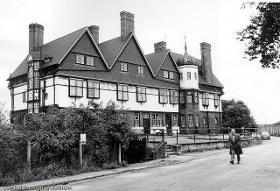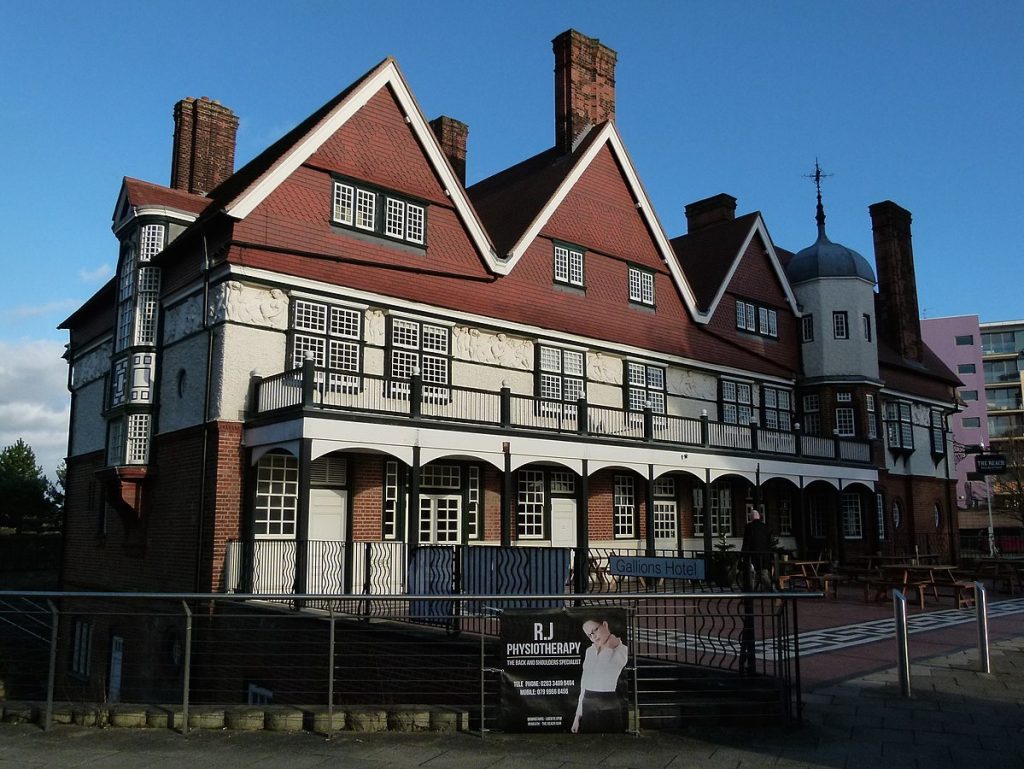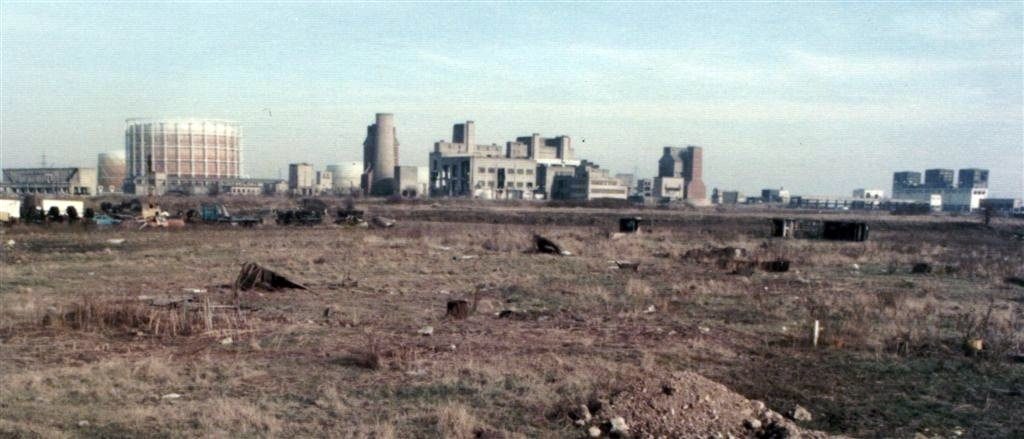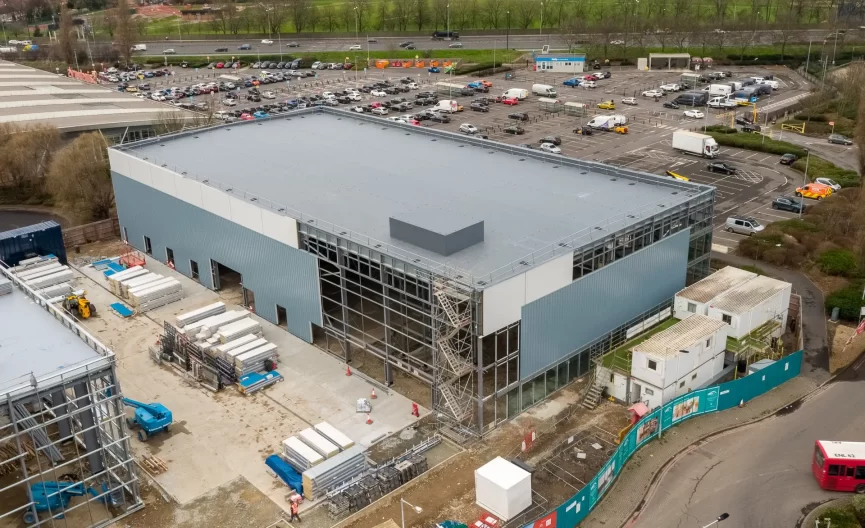Unpacking The History From Our Newest East End Attic
In last week’s blog, we learnt about how The Great Stink was cleaned up, the tragic sinking of SS Princess Alice and the downfall of The Beckton Alps. This week we will round up the series with The Housing Crisis, The Great British Hotel and a focus on a brighter future for Beckon.
THE HOUSING CRISIS
Originally, lots of purpose-built Victorian housing estates sprung up to accommodate the employees from the sewage and gas works. As you’d guess – two-up-two-downs for the workers and more generously proportioned end-of-terrace houses for foremen and their families.
Some of these original properties still survive around Winsor Park and Winsor Terrace.
The neighbouring marshland was divided up into allotments so poor folk with green fingers could grow their own runner beans and potatoes.
For a short while, this less than prime land was also the site of a prisoner of war camp run by the MOD.
Then, when the Second World War ended, hundreds of prefabs were hurriedly slung up to accommodate the families who’d been bombed out of the docks and East End.
Just to make them feel at home, all the roads were named after well-known generals and war heroes, until the redevelopment of North Beckton in the 1980s swept the original names away, except for Eisenhower Drive.
Mind you, if you look hard enough, there are still a few signs which tip their cap to the memory of Britannia’s glorious naval past and ruling of the waves.
A GREAT BRITISH HOTEL
South of Attic’s new Beckton branch, on the north bank of the river, Gallions Hotel, or ‘the captain’s brothel’ as it was known locally, was erected in the 1880s to accommodate crew and passengers joining P&O ships at the adjacent Royal Albert Docks.
The rich and famous sailed to all parts of the Empire after sinking a few G&Ts here.


Many colonial officials and their families spent their last night in Britain in the Gallions, and Rudyard Kipling even mentioned it in his novel The Light That Failed. The Grade II listed building stood empty for many years, before being renovated as part of an urban redevelopment deal.
The old place is now surrounded by upmarket apartment blocks and has been rebranded as Galyons Bar & Kitchen (4.5 stars on TripAdvisor).
LONDON DOCKLANDS DEVELOPMENT CORPORATION
Throughout the 60s and 70s, the huge swathe of brownfield real estate between Attic Self Storage Beckton and the Thames remained a wasteland of breakers yards, derelict factories, lock-up garages, illegal drinking clubs and villainous shenanigans (no names) until the London Docklands Development Corporation took over the area from 1981 to 1995.
Hundreds of ‘new build’ homes went up and the Docklands Light Railway was constructed. The regeneration of the entire area has created a cluster of industrial parks, out-of-town shopping centres and homes for London’s workforce. Most of the architecture is post-1982.
Beckton has now pretty much absorbed the small houses of the suburb of Cyprus (named after the British capture of Cyprus from the Ottoman Empire in 1878, which happened as the original estate was being built).
LOCATION, LOCATION, LOCATION
The Hollywood potential of the derelict gasworks was spotted in the early 1980s, when Stanley Kubrick’s team came scouting for a London location that could double for the battle scenes in his 1987 film, Full Metal Jacket.

The rough concrete structures were painted with Vietnamese script, and then strategically dynamited to recreate war-torn Hue.
Other notable silver screen outings for Beckton include the 1981 James Bond film, For Your Eyes Only, which featured extensive aerial views of the Gasworks in the pre-credit sequence.
The area was also used as a location in Michael Radford’s 1984 feature film adaptation of George Orwell’s Nineteen Eighty-Four – the Gasworks served as the setting for the story’s “Proletarian Zones”.
CELEBRITY ENDORSEMENT
Footballer Jermain Defoe was born in Beckton and once claimed that Beckton “made him the man he is today”. On 13 February 2006, Defoe scored his 100th Premier League goal against Charlton and celebrated by making a “B” sign with his hands to commemorate his place of birth.
BUILD BACK BETTER BECKTON
In recent times, retail parks have sprung up everywhere. The factories have gone, the smoke stacks have been demolished, the gas storage tanks have been dismantled and the ski slope is a nature reserve.
This is a land of cement trucks, scaffolding and building sites. Cranes run things round here nowadays, not the Krays. New apartment blocks pop up like snowdrops in the spring.
The Northern Outfall sewer has been landscaped and now also serves as the Greenway cycle track through east London, which you can follow all the way back to where the first Attic Self Storage facility was born in Bow, E3.
THE FUTURE IS BRIGHTER THAN THE PAST
Here concludes our little potted history of Beckton. The construction team at our latest Attic Self Storage site hasn’t uncovered any colourful Roman mosaics, shiny Frankish Tremisses or ancient Pagan burial chambers.
The checkered history of the surrounding area might leave a nasty taste in the mouth, but there’s no point in trying to sanitise the past – it’s only by looking back at our mistakes, and learning from them, that we can build a brighter future for everyone.
We hope you’ve enjoyed reading about raw sewage being released into our rivers, royal scandals, air pollution, inadequate housing, and the rest.
As we said, nothing changes.
Except, yes it does. Attic is determined to build something new, positive and sustainable wherever we provide storage around London. If you know of any local charities or community groups that could use our support and backing, please let us know.
We’re here to make Beckton’s future brighter and more fragrant than its past. And if we can save a 90-year-old willow tree in the process, then we’ll feel like we’ve achieved something.
Hope you enjoyed learning about the history of Beckton as much as we did!




